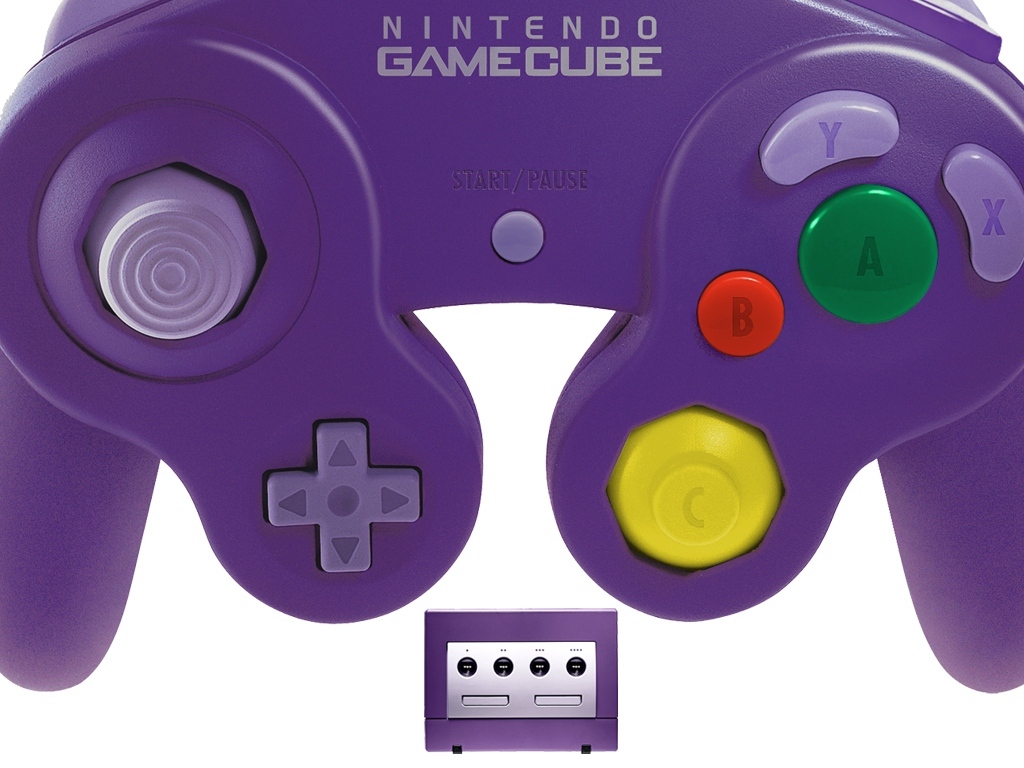

The Nintendo GameCube, released in 2001, marked Nintendo’s entry into the optical disc era. Developed as the successor to the Nintendo 64, the GameCube featured a compact and innovative design, adopting miniDVDs as its main media, which helped reduce production costs and piracy. The console was first revealed in 1999 under the codename “Project Dolphin” and officially launched in September 2001 in Japan and November 2001 in North America.
The GameCube strongly focused on multiplayer gaming and high-quality titles such as Super Smash Bros. Melee, The Legend of Zelda: The Wind Waker, and Metroid Prime. Although it did not achieve the same commercial success as its competitors, the PlayStation 2 and Xbox, the GameCube is remembered for its innovative game library and unique gaming experience.
Technical Information
- Processor: IBM PowerPC Gekko 485 MHz
- GPU: ATI Flipper 162 MHz
- Memory: 24 MB main memory + 16 MB DRAM
- Media: Proprietary 1.5 GB miniDVDs
- Storage: Proprietary memory cards
- Video Resolution: 480p (with optional component cable)
- Controllers: Ergonomic controller with two analog sticks, D-Pad, front buttons, and triggers
General Information
- Console Names: Nintendo GameCube, NGC, GCN
- Release Date: September 14, 2001 (Japan), November 18, 2001 (North America), May 3, 2002 (Europe)
- Original Price: US$199.99
- Country of Origin: Japan
- Manufacturer: Nintendo
- Primary Media: Proprietary 1.5 GB miniDVDs
- Units Sold: Approximately 21.74 million units
- Successor: Nintendo Wii
- Predecessor: Nintendo 64
- Backward Compatibility: Compatible with GameCube games and accessories on the Nintendo Wii
Accessories and Special Controllers
The Nintendo GameCube featured various accessories and special controllers that enhanced its functionality and gameplay experience:
- Game Boy Player: Allowed players to play Game Boy, Game Boy Color, and Game Boy Advance titles directly on the GameCube.
- Bongo Controller: Used in games like Donkey Konga and Donkey Kong Jungle Beat, providing a musical and interactive experience.
- Steering Wheel: Compatible with racing games such as Mario Kart: Double Dash!! for a more realistic driving experience.
- Microphone: Used in titles like Mario Party 6 and Odama, allowing voice commands.
- Broadband Adapter: Enabled online multiplayer for games such as Phantasy Star Online.
- WaveBird Wireless Controller: One of the first widely successful wireless controllers using radio frequency technology, influencing future Nintendo wireless controller designs.
- Memory Cards: Essential for game progress saving, available in various storage capacities
Impact and Legacy
Although it was not the best-selling console of its generation, the Nintendo GameCube had a significant impact on the gaming market. It was Nintendo’s first console to use optical discs, paving the way for the Wii. Its game library remains highly respected, with many titles considered cult classics.
The GameCube is also remembered for its robust construction and emphasis on local multiplayer gameplay. Games like Mario Kart: Double Dash!! and Super Smash Bros. Melee are still played in competitions today. Additionally, the GameCube influenced the design of the Wii and Wii U controllers, as well as the modern Nintendo Switch Pro Controller.
Curiosities
- The GameCube was Nintendo’s first console to offer online connectivity for some games, although this feature was underutilized.
- The handle on the back of the console was designed for easy transport, encouraging local multiplayer sessions.
- The compact and colorful design of the GameCube was an attempt by Nintendo to appeal to a younger audience.
- Super Smash Bros. Melee became the console’s best-selling title, with over 7 million copies sold.
- Panasonic released a special version of the GameCube called Panasonic Q, which combined the functions of the GameCube with a DVD player, offering additional multimedia features. This version was released exclusively in Japan and is considered a collector’s item.

 Português do Brasil
Português do Brasil











